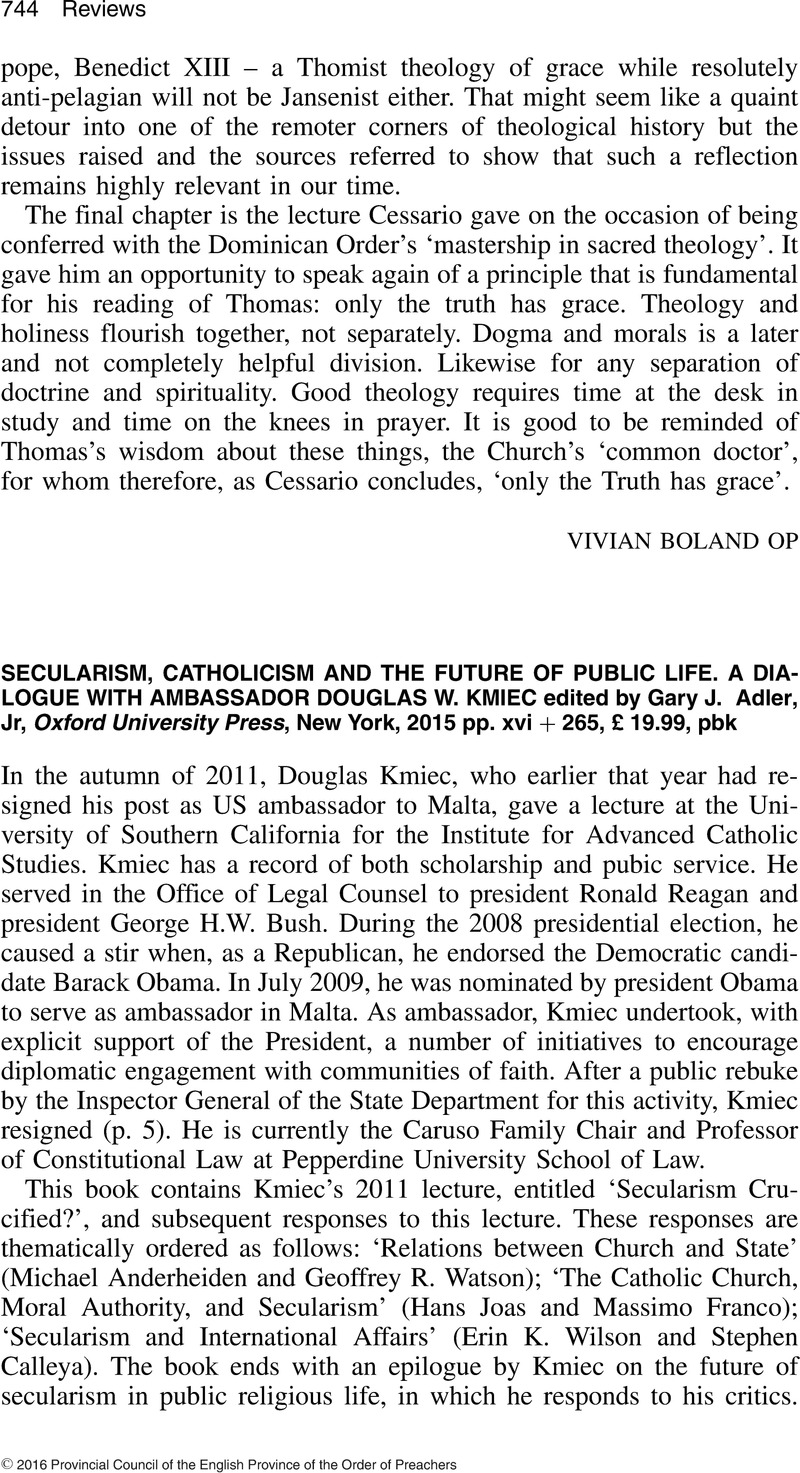No CrossRef data available.
Article contents
Secularism, Catholicism and the Future of Public Life. A Dialogue with Ambassador Douglas W. Kmiec edited by Gary J. AdlerJr, Oxford University Press, New York, 2015 pp. xvi + 265, £19.99, pbk
Review products
Published online by Cambridge University Press: 01 January 2024
Abstract

- Type
- Reviews
- Information
- Copyright
- Copyright © 2016 Provincial Council of the English Province of the Order of Preachers


